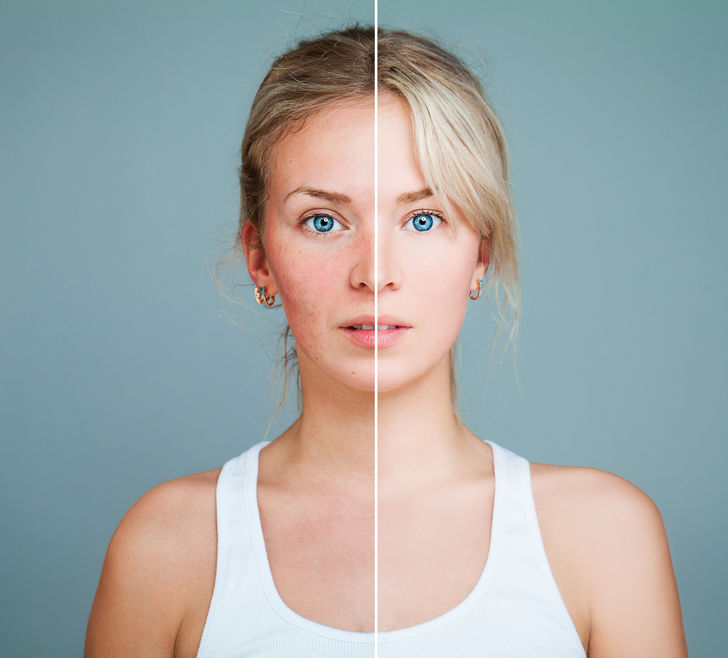Rosacea
|
Rosacea is a common, yet poorly understood condition that affects the skin on the face. Unlike blushing, which disappears after a few moments and is caused by the capillaries under the surface of the skin dilating with blood, rosacea sufferers often experience visible blood vessels and spots, with the redness becoming more persistent. SymptomsIn the early stages of rosacea, this ‘blushing’ may take hours or even days to disappear and the reddened skin may be accompanied by itching, burning and a lower tolerance to skincare products. In later stages of the condition, the flushing lasts for longer periods and the affected areas may dilate and swell up with blood and the skin can take on a purplish hue and develop bumps and pimples. The affected area may also become dry and flaky. As the rosacea gets worse the veins begin to weaken and leak, becoming unable to remove lymph – a fluid containing white blood cells derived from the tissues of the body – from the blood system in the normal way. Rosacea can also affect the eyes. Sufferers’ eyes often appear watery or bloodshot and they may complain of a gritty sensation or the feeling that there is a foreign body in the eye. In extreme cases, the cornea of the eye can become opaque and cause loss of sight. While there is no known cause for rosacea there are several theories about why it may develop. There could be a link with a bacteria connected to stomach ulcers, an infestation of skin mites, particular fungi, a malfunction of the connective tissue under the skin or even psychological factors. Environmental factors such as air-borne toxins and toxic chemicals may also trigger the symptoms. Some scientists theorise that rosacea is hereditary and there does appear to be a link with certain skin types. Fair, thin, northern European skins appear to be particularly prone – with an estimated 2-5% of sufferers – as well as people with other skin conditions, such as the varying forms of eczema and dermatitis. There appear to be a number of elements that can provoke an outbreak of rosacea, including exposure to the sun, stress, artificial sweeteners, foods such as coffee, chocolate or tomatoes, and alcohol and smoking. However, it’s worth noting that this list isn’t exhaustive, nor is the research into what causes rosacea anywhere near complete. TreatmentAt present, rosacea has no ‘cure’, but there are various effective treatments available. Sufferers can be prescribed oral or topical antibiotics for their anti-inflammatory qualities, and occasionally, a cardiovascular medication may also be used to control the flushing. Dermatologists recommend that the face be cleansed morning and night with a mild cleanser, rinsing the face several times with lukewarm water and patting dry with a soft towel. Allow the skin to dry in the air for several minutes before applying the topical medication and let it soak into the skin for approximately ten minutes before applying a moisturiser. Avoid using exfoliators or a rough washcloth, creams containing AHA (alpha hydroxy acid - creams that stimulate cell regeneration by burning off, or lightly removing, the top layer of skin cells) or retinol (over-the-counter Vitamin A products), acne creams and extremes of temperature. Skincare products should include key ingredients such as aloe, arnica, camomile, green tea and vitamins, and in more extreme cases, laser treatment may be recommended to remove visible blood vessels and reduce excessive redness. Generally at least three laser treatments are necessary to see the full benefits. A professional skincare therapist can also offer relief to sufferers of rosacea in the following ways:
|
 |



